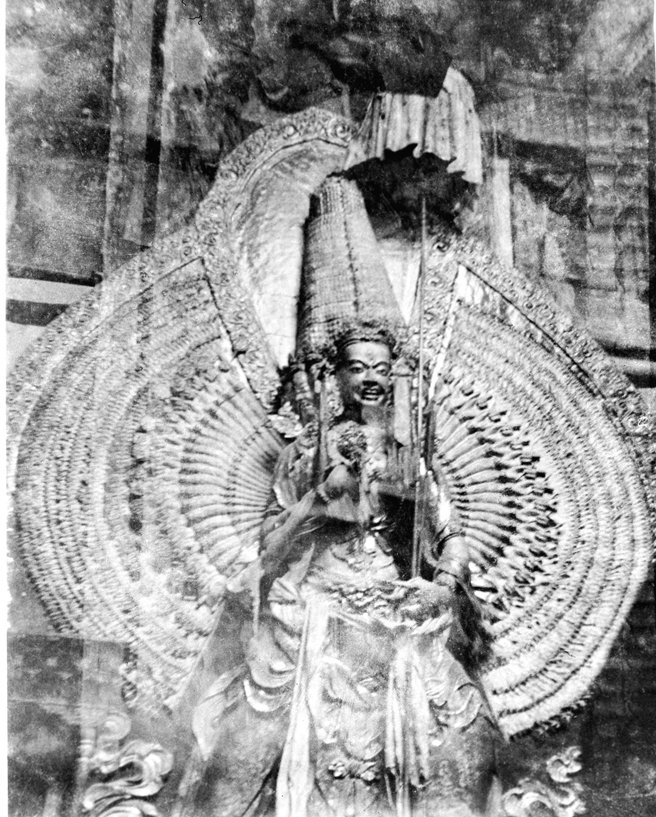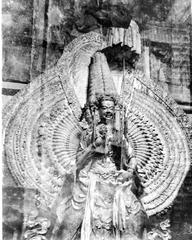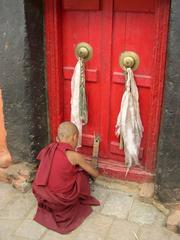
Sankar Monastery Leh: Visiting Hours, Tickets, and Comprehensive Travel Guide
Date: 15/06/2025
Introduction
Sankar Monastery, or Sankar Gompa, is a tranquil Buddhist monastery located just a few kilometers from Leh town, Ladakh. As a daughter monastery of the renowned Spituk Gompa, it stands as both a spiritual sanctuary and a testament to Ladakh’s vibrant Buddhist and cultural traditions. This guide offers detailed information about its history, visiting hours, ticketing, architecture, rituals, accessibility, and sustainable travel tips for an enriching and responsible visit.
For further insights, consult Discover with Dheeraj and TravelTriangle’s guide to Ladakh monasteries.
Table of Contents
- Introduction
- Historical Background
- Visiting Hours and Ticket Information
- Getting There: Location and Accessibility
- Monastic Life, Rituals, and Festivals
- Practical Visitor Tips
- Responsible Tourism and Cultural Etiquette
- Facilities and Amenities
- Nearby Attractions and Photographic Spots
- FAQ
- Conclusion
- References
Historical Background
Origins and Foundation
Sankar Monastery was established in the early 20th century under the guidance of Kushok Bakula Rinpoche, a revered spiritual leader and the head lama of Spituk Monastery. Constructed to serve the spiritual needs of Leh’s growing population, it is located in a peaceful suburb, surrounded by traditional Ladakhi homes and poplar groves.
Architecture and Layout
The monastery showcases a harmonious blend of Ladakhi and Tibetan architectural elements. Its main assembly hall (Dukhang) is adorned with vibrant murals depicting the Buddha, Bodhisattvas, and protective deities. The intimate scale—housing about 20 monks—fosters a serene atmosphere, distinct from larger monastic complexes. Other features include the Avalokiteshvara Chapel, smaller shrines, the monastic library, and the residence of the abbot.
Cultural and Religious Role
Sankar Gompa is a prominent center for the Gelugpa (Yellow Hat) tradition of Tibetan Buddhism. It plays a vital role in local religious life, participating in major Buddhist festivals such as Losar and Buddha Purnima, and hosting daily rituals that foster community and spiritual well-being.
Visiting Hours and Ticket Information
- Visiting Hours: Open daily from 7:00 AM to 10:00 AM and 5:00 PM to 7:00 PM. These hours are designed to respect the monks’ routines and maintain the monastery’s peaceful ambiance (Travelogy India).
- Entry Fee: A nominal fee of ₹30 per person is charged to support maintenance (Travelogy India). Donations are also welcomed.
- Recommended Duration: 1–2 hours is sufficient to explore the monastery and its tranquil surroundings.
Getting There: Location and Accessibility
- Distance: About 2–3 km from Leh’s main bazaar.
- By Foot: A 20–30 minute scenic walk from the town center.
- By Taxi/Car: Less than a 10-minute drive; taxis are readily available.
- By Air: Leh’s Kushok Bakula Rimpochee Airport is the nearest airport, about 15–20 minutes away by taxi (TripXL).
- By Bus: Local buses run to nearby areas, though schedules may be irregular.
- Accessibility: The monastery is accessed by steps; mobility-challenged visitors may need assistance (Flyopedia).
Monastic Life, Rituals, and Festivals
- Monastic Community: Home to around 20 monks, with a few permanent residents. The abbot of Spituk Monastery resides here.
- Rituals: Daily prayers and rituals are central. Lamas from Sankar also maintain Namgyal Tsemo Monastery, lighting butter lamps and conducting ceremonies (Wikipedia).
- Festivals: The monastery participates in Buddhist festivals, which are excellent opportunities for visitors to witness traditional rituals and dances.
Practical Visitor Tips
Best Time to Visit
- Season: March to October offers the best weather and open roads (Flyopedia).
- Time of Day: Early morning and evening, coinciding with visiting hours and monastic prayers.
Dress Code and Etiquette
- Dress modestly, covering shoulders and knees.
- Remove shoes before entering prayer halls.
- Maintain silence and respect ongoing rituals.
- Always seek permission before photographing monks or sacred objects.
Health and Acclimatization
- Leh is at 3,500 meters elevation; acclimatize before strenuous activities.
- Stay hydrated, avoid alcohol, and rest if experiencing altitude sickness (Cliffhangers India).
Responsible Tourism and Cultural Etiquette
- Practice Leave No Trace: carry out your trash and avoid single-use plastics.
- Stick to marked paths to protect local vegetation.
- Support local artisans and businesses by purchasing handmade, eco-friendly souvenirs.
- Greet with “Julley” and be respectful of local customs.
- Respect wildlife and avoid disturbing habitats.
Facilities and Amenities
- Accommodation: No lodging at the monastery; numerous guesthouses and hotels are available in Leh (TripXL).
- Food: Dining options are available in Leh’s main bazaar.
- Restrooms: Use facilities in town before or after your visit.
Nearby Attractions and Photographic Spots
- Leh Palace: Offers panoramic views and rich royal history (LehLadakhIndia).
- Namgyal Tsemo Monastery: Features a three-story gold statue of Maitreya Buddha.
- Shanti Stupa: A modern stupa with sweeping views of Leh and surrounding mountains.
- Spituk Monastery: The parent monastery of Sankar, located nearby.
Sankar Monastery’s murals, statues, and hilltop location provide excellent photographic opportunities, especially during sunrise and sunset.
Frequently Asked Questions (FAQ)
Q: What are the Sankar Monastery visiting hours?
A: 7:00 AM to 10:00 AM and 5:00 PM to 7:00 PM daily.
Q: Is there an entry fee?
A: Yes, ₹30 per person (subject to change). Donations are also welcome.
Q: How do I reach Sankar Monastery from Leh?
A: Walk (20–30 minutes from the main bazaar), taxi, or local bus.
Q: Are guided tours available?
A: Yes, through local operators in Leh.
Q: Is photography allowed?
A: Permitted in exterior and some interior spaces; prohibited inside main sanctums.
Q: Is the monastery accessible for people with mobility issues?
A: There are steps and uneven paths—some assistance may be needed.
Conclusion
Sankar Monastery is a must-visit for those seeking to immerse themselves in Ladakh’s spiritual and cultural tapestry. Its accessible location, rich artistic heritage, and peaceful ambiance make it ideal for pilgrims, history enthusiasts, and travelers alike. By respecting visiting hours, observing local customs, and practicing responsible tourism, you contribute to the preservation of this treasured site.
For further travel guidance and updates, download the Audiala app and explore resources such as Flyopedia’s Sankar Gompa guide and Holidify’s Sankar Gompa page.
References
- Discover with Dheeraj
- TravelTriangle’s guide to Ladakh monasteries
- Flyopedia’s Sankar Gompa guide
- Holidify’s Sankar Gompa page
- TripXL
- Cliffhangers India
- Ekashmir Tourism
- LehLadakhIndia
- Wikipedia
- Tusk Travel
Image Suggestions:
- Sankar Monastery Leh entrance view (alt: “Sankar Monastery Leh Ladakh entrance view”)
- Murals and statues in prayer halls (alt: “Murals inside Sankar Monastery”)
- Panoramic view from the monastery hilltop (alt: “Panoramic view from Sankar Monastery overlooking Leh”)
Interactive Media:
- Embed a map showing the monastery’s location relative to Leh town
- Link to virtual tours if available

